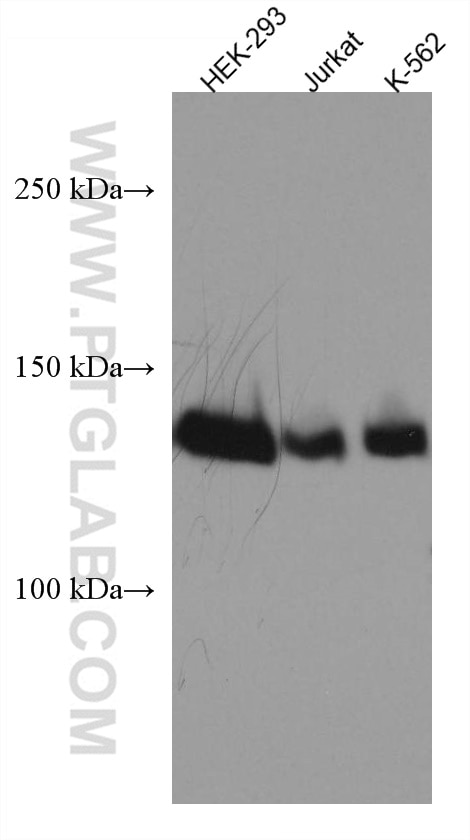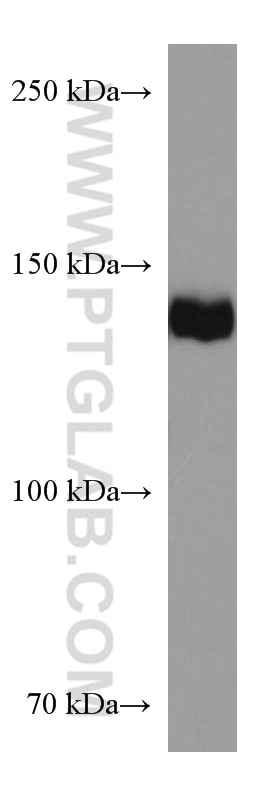SALL2 Monoklonaler Antikörper
SALL2 Monoklonal Antikörper für WB, ELISA
Wirt / Isotyp
Maus / IgG2a
Getestete Reaktivität
human, Maus, Ratte
Anwendung
WB, ELISA
Konjugation
Unkonjugiert
CloneNo.
3B6G2
Kat-Nr. : 67522-1-Ig
Synonyme
Geprüfte Anwendungen
| Erfolgreiche Detektion in WB | HEK-293-Zellen, Jurkat-Zellen, K-562-Zellen, NCCIT-Zellen |
Empfohlene Verdünnung
| Anwendung | Verdünnung |
|---|---|
| Western Blot (WB) | WB : 1:1000-1:6000 |
| It is recommended that this reagent should be titrated in each testing system to obtain optimal results. | |
| Sample-dependent, check data in validation data gallery | |
Produktinformation
67522-1-Ig bindet in WB, ELISA SALL2 und zeigt Reaktivität mit human, Maus, Ratten
| Getestete Reaktivität | human, Maus, Ratte |
| Wirt / Isotyp | Maus / IgG2a |
| Klonalität | Monoklonal |
| Typ | Antikörper |
| Immunogen | SALL2 fusion protein Ag30007 |
| Vollständiger Name | sal-like 2 (Drosophila) |
| Berechnetes Molekulargewicht | 1007 aa, 105 kDa |
| Beobachtetes Molekulargewicht | 140 kDa |
| GenBank-Zugangsnummer | BC024245 |
| Gene symbol | SALL2 |
| Gene ID (NCBI) | 6297 |
| Konjugation | Unkonjugiert |
| Form | Liquid |
| Reinigungsmethode | Protein-A-Reinigung |
| Lagerungspuffer | PBS with 0.02% sodium azide and 50% glycerol |
| Lagerungsbedingungen | Bei -20°C lagern. Nach dem Versand ein Jahr lang stabil Aliquotieren ist bei -20oC Lagerung nicht notwendig. 20ul Größen enthalten 0,1% BSA. |
Hintergrundinformationen
Sall2 (SALL2, sal-like 2, HSAL2, p150(Sal2)) are mammalian homologs of the Drosophila region-specific home-otic gene spalt (sal), which encodes a zinc finger- containing transcription regulator. Mammalian Sall1 may mediate higher order chromatin structure and may be a component of a distinct heterochromatin-dependent silencing process. Sall2 is a p53-independent regulator of p21 and BAX, and can function in some cell types as a regulator of cell survival. Human Sall2 is present in brain, heart, kidney and pancreas.
Protokolle
| PRODUKTSPEZIFISCHE PROTOKOLLE | |
|---|---|
| WB protocol for SALL2 antibody 67522-1-Ig | Protokoll herunterladen |
| STANDARD-PROTOKOLLE | |
|---|---|
| Klicken Sie hier, um unsere Standardprotokolle anzuzeigen |



